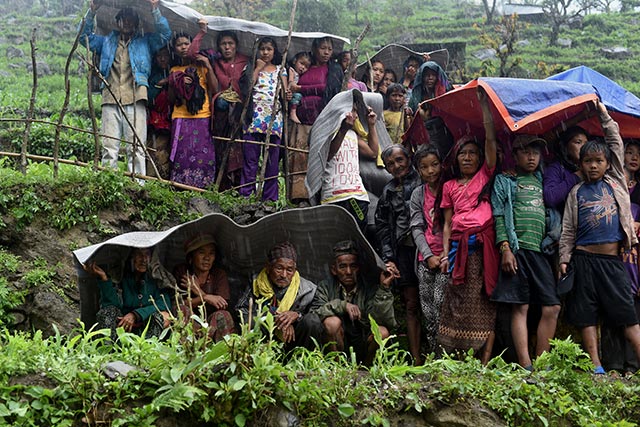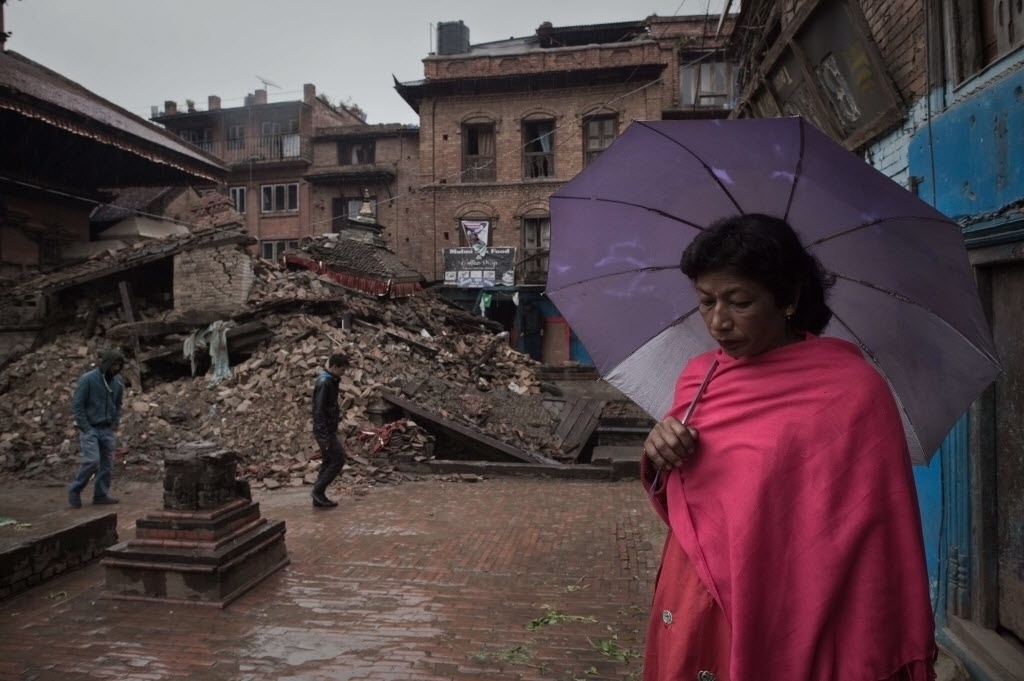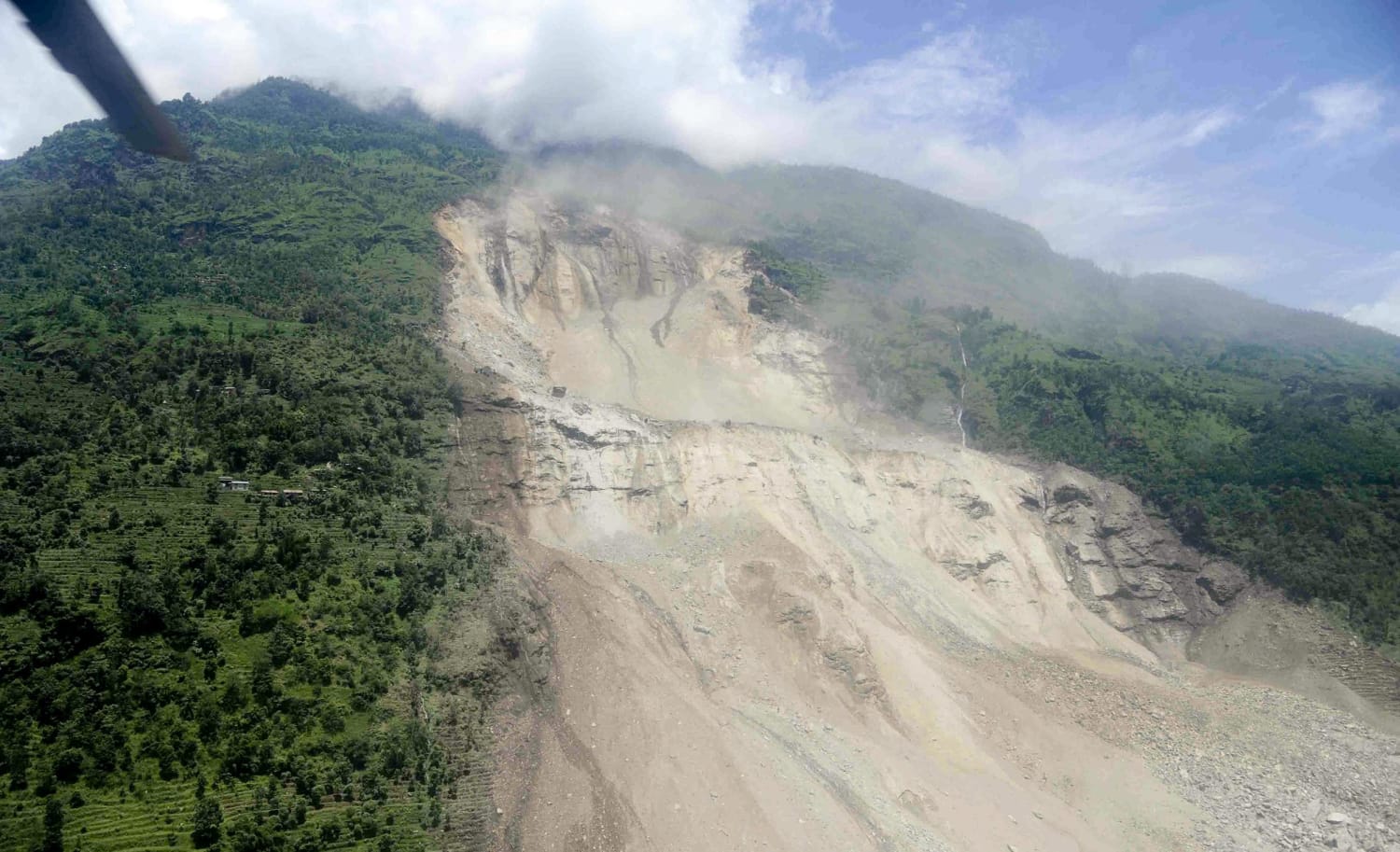by Nina Horstmann
On April 25, a 7.9 magnitude earthquake struck Nepal. While reports about the extent of damage in rural areas are still trickling in, the UN currently estimates that over 8 million people have been affected by the quake and the Nepali government has accounted for over 7,000 fatalities. Since the quake, persistent aftershocks have triggered further avalanches and landslides, compounding the destruction. In addition to the capital city of Kathmandu, remote mountainous areas of Nepal have been particularly impacted, yet the ability of relief efforts to reach these areas has been impeded by the devastation.
The South Asian monsoon circulation brings rainfall to Nepal from June to September; during these 3 months the southwest monsoon brings more than 75% of the annual rainfall. The monsoon is critical for agricultural production in Nepal, which relies on monsoon rains for irrigation. According to the Nepali Department of Agriculture, the agriculture sector employs 2/3 of the population and makes up nearly 35% of the GDP.

Impending monsoon rains may frustrate relief efforts. Sienna Craig, a professor of Anthropology at Dartmouth University who has worked in Nepal for over 20 years, notes that monsoon rains will bring further challenges to the region, complicating access to clean water and triggering landslides that may frustrate reconstruction efforts. Pre-monsoon rains have already curtailed humanitarian aid in the region.

The seasonal monsoon brings heavy daily rains, as well as the threat of floods or landslides. Last year, torrential monsoon rains in Nepal caused multiple landslides and flooding; a particularly fatal landslide demolished an entire village east of Kathmandu, killing 156 people. Landslides may cause further fatalities, destroy makeshift shelters, and wipe out roads. Efforts by relief teams to reach remote regions may be hampered by rains that make it difficult for helicopters to fly and by landslides that bury roads in rubble.

Rownak Khan, the UNICEF deputy representative in Nepal, has stated that the forthcoming monsoon season is a concern, as deadly disease outbreaks could be triggered by the wet and muddy conditions. “Hospitals are overflowing, water is scarce, bodies are still buried under the rubble and people are still sleeping in the open. This is a perfect breeding ground for diseases,” said Khan. Another UNICEF spokesperson, Chris Tidey, warned that the prevalence of diarrheal diseases, respiratory illnesses, measles and cholera will soar during the monsoon season if people are living in the open during heavy rains. Thirteen UK humanitarian organizations that are involved in relief efforts in the country cautioned that the hundreds of thousands living outdoors will be vulnerable to the coming monsoon. Many are currently living in the open, camping outdoors or in makeshift shelters, because 130,000 homes have been flattened by the quake.

As medical expert Dr. Nikhil Joshi forewarns, “We often look at things in terms of death toll from a disaster. But that really only tells a fraction of the story.” Humanitarian relief to Nepal will be an ongoing trial, especially given the logistical difficulties of providing appropriate goods and services in a mountainous region that will soon be subject to the hydrological extremes of the monsoon season. People who are considering donating to the relief efforts might consider the particular efforts that have been recommended by the Yale Himalaya Initiative.
Humanitarian relief to Nepal will be an ongoing trial, especially given the logistical difficulties of providing appropriate goods and services in a mountainous region that will soon be subject to the hydrological extremes of the monsoon season.